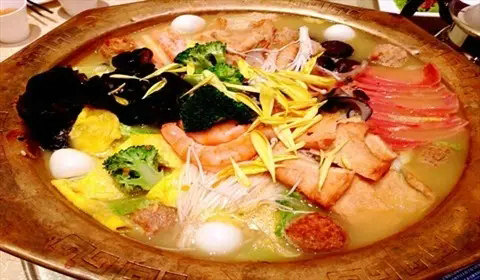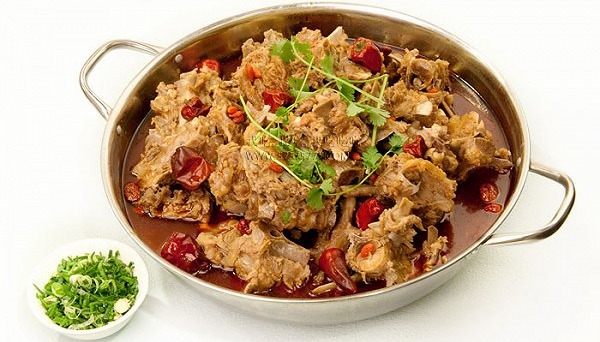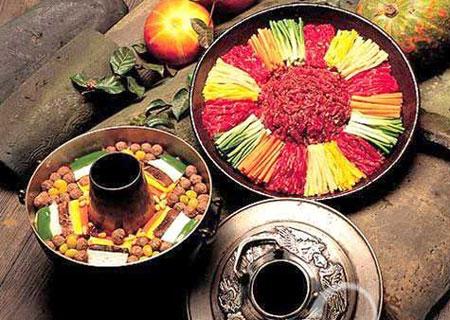Education is to see the world with innocent and open eyes.
"Rain" begins and "beginning of spring" ends. From the first second of the opening ceremony of the 2022 Beijing Winter Olympics, there was a definition of China culture.
The circulation of the 24 solar terms is a book of nature. For the children of Yucai School in Furong District, Changsha, the 24 solar terms run through the school all year round. What kind of course is this? How to connect the teaching contents with China elements in series with solar terms? How can such a course open children’s senses, discover the connection of life, and bring them back to the vast countryside of China’s harmonious culture?
A few days ago, the reporter interviewed Zhu Aichao, the principal of Yucai School in Furong District, Changsha City, and listened to her talk about how teachers and students feel the beauty of the season in the solar terms culture.
1. The path for primary school students to lay a cultural foundation and a natural foundation — —
Through the course of 24 solar terms, without breaking the existing class schedule and disturbing the teaching order and teachers’ arrangement, the course is implemented in solar terms, and all disciplines are integrated.
Reporter: The 24 solar terms are different from other intangible cultural heritages. They are more vital and exist in every simple day. How do you think of putting the 24 solar terms into teaching? Take students to the ancestral wisdom hidden behind the solar terms? What kind of course is there in the middle?
Zhu Aichao:In February 2013, I began to take students from Class 3, Grade 2 to observe the plants in the peach and plum garden of Yucai School, and to observe and record the nature by taking natural notes with pictures and words. Week after week of observation, these plants, which were once ignored by primary school students, have a connection with their lives: they will feel distressed for the broken twig of plum trees, and they will long for a rain for the plants in drought. Students understand that plants need to be protected, which is only at the rational level. When students are distressed that plants are hurt, the feeling level starts, which is the beginning of students’ integration of knowledge and practice and laying a natural foundation.
Can we solve the problem of primary school students getting close to culture and nature in the construction of a curriculum? In the constant exploration, I focused my eyes on the twenty-four solar terms. The twenty-four solar terms are a timetable and a manifestation of the combination of man and nature. For example, on the rainy day, we not only know that it is February 19th, but also know that the weather is getting warmer and warmer. The geese fly back to the north from the south, and everything is wet and green, so that man and nature become organic life. I found a way for primary school students to lay a cultural foundation and a natural foundation, that is, to integrate all disciplines through the 24 solar terms curriculum to educate people as a whole and practice education. I led the students to understand solar terms and phenology, made natural notes on solar terms, and added Chinese characters, poems, old stories and traditional games related to solar terms. In the endless 24 solar terms, students are more calm and more secure.
On the basis of class practice, together with teachers from various disciplines, I began to comprehensively construct the 24 solar terms curriculum of the whole school in 2016, hoping to further improve the curriculum system. The school implements the curriculum in solar terms without breaking the existing class schedule and disrupting the teaching order and teachers’ arrangements. Each solar term is about 15 days, 5 days is a "wait", and each solar term has three "waits". The implementation of the course basically follows this rhythm, with five days as the unit, and three classes to complete the content of a solar term course. From beginning of spring to the Great Cold, it takes one year to complete, and it is integrated into the daily school life and family life of primary school students.
2. The course runs through the 24 solar terms throughout the year — —
Educating people is not a point, but a river in the time dimension, which flows quietly in the daily life of primary school students. It highlights the transformation of a way of educating people oriented towards the excellent Chinese traditional culture and nature.
Reporter: Some schools have similar courses. How to make their own characteristics and form their own system? What are the factors that you and your teacher pay special attention to when teaching? Which courses are popular with teachers and students?
Zhu Aichao:The twenty-four solar terms are not only a timetable, but also a manifestation of the combination of man and nature. I expect the children to integrate into the rhythm of heaven and earth through the 24 solar terms, so that they can feel at ease. Twenty-four solar term courses are divided into the following parts: understanding phenology, reading solar term poems, writing solar term Chinese characters, telling old solar term stories, conducting solar term scientific observation, experiencing solar term customs, developing solar term planting, making solar term supplies, investing in solar term exercise, absorbing solar term psychological nutrition, participating in solar term project-based learning, etc. Thematic cross-border learning is implemented by solar term, and the boundaries of disciplines begin to merge from sub-subject teaching to interdisciplinary integration.
The course runs through the 24 solar terms throughout the year, so that educating people is not a point, but a river in the time dimension, quietly flowing in the daily life of primary school students. Continuous meteorological observation, solar altitude angle measurement, and observation of leaves, rain, birds, bees, silkworms and stars combined with the characteristics of solar terms have stimulated students’ desire for scientific inquiry and cultivated their habit of scientific observation. There is a grass garden labor base in the school campus. According to the practical ability of students of different grades, the annual planting plan is worked out. By planting crops, observing and recording the growth process of crops, and making solar food, drinks and daily necessities with crops, the comprehensive construction and interdisciplinary development of the course are realized. Influenced by the external environment and infiltrated by the internal curriculum, students have a feeling of fearing and treating nature and an environmental awareness of recycling everything in their daily lives. The rich curriculum system touches all aspects of students’ daily life, and the school, family and society work together to form a three-dimensional and large-scale educational state, which highlights the reform of educational methods oriented towards being close to Chinese traditional culture and nature.
Ancient Chinese characters are as beautiful as pictures and as rich as stories. Telling children about the process of a Chinese character from Oracle Bone Inscriptions, inscriptions on bronze, seal script to regular script is to return to the original living environment of the creator, see the world with naive and open eyes, and express the most prominent features of things in the simplest way.
For example, in beginning of autumn season, you should know the word "Wo". Oracle Bone Inscriptions’s word "Wo" looks like a withered and mature rice, with stalks, roots and leaves, and heavy ears of grain drooping. The word "Wo" in inscriptions on bronze inscriptions has ears hanging to the left. The word "He" in Xiao Zhuan evolved along the shapes of Oracle Bone Inscriptions and inscriptions on bronze, but the leaves and roots began to deform. Children feel that Chinese characters are not only abstract strokes, but also have rich connections with everything.
Stunned, the sixth grade children recorded the changes of willow trees. "The new buds are shy, and they roll up the small leaves, as if covering their faces with their hands. Catkin has changed from a few small particles on the bottom of leaves to many large strips, all concentrated on a small shaft. " "When I grow up, the catkin becomes like a caterpillar, plump and lovely, and soon it can spread its gorgeous side and turn into a beautiful butterfly. A new journey is about to begin. " When facing nature, children not only see with their eyes, but also listen with their ears, smell with their noses, touch with their hands and feel with their bodies. The natural notes in the solar terms keep children’s senses open.
In the experience of solar life, solar customs are transformed into real life experiences. In long summer, children knit egg covers and play the game of hitting eggs. The children concentrate on making egg covers, four layers of knitting, which is complicated and requires patience. The children put the eggs in the egg cover and played the egg-bump game in groups, happy and satisfied.
The twenty-four solar terms tell people that the light and heat obtained in the same place in a year are different, and people should plant in different solar terms according to the needs of crops for light and heat. "Before and after Qingming Festival, plant melons and beans". Children are experiencing the fun of planting in the "Herb Garden". Mung bean and kidney bean seeds planted in Qingming Festival are observed by children every day and watered every day. Finally, during the Grain Rain solar term, they germinated. The children stared affectionately, and every bud was so beautiful.
3. There are endless educational resources in nature, with the most vivid metaphors and inspirations — —
The beauty of education lies in "this body, this time and this place", which is the real life experience of every student at school at every moment.
Reporter: Now, there are more alliance schools and more teachers and students join in. After so many years, what changes do you feel in teachers and students? What kind of understanding does the course give you about education?
Zhu Aichao:In the process of growing up with children and teachers, I deeply realized that education means working with time. When we work with time, we can build a close relationship between children and the whole world, and we can make people feel at ease — — Live in a steady circle of time, live in the work of the four seasons, and live in the endless nature.
Under the guidance of the teacher nature, we have learned the philosophy of man getting along with heaven and earth. Running, playing, exploring and meditating in nature have solved the worries and boredom accumulated by children in their hearts. The beauty of education lies in "this body, this time and this place", which is every child’s real life experience at every moment in school. In 2017, WeChat official account, the school’s WeChat, presented the record of the implementation of the 24 solar terms curriculum by combining pictures and texts. In the photos, the gifted students smiled from the heart in each solar term, which made us fully realize the beauty of education.
Teachers’ occupational happiness index has been improved. In the process of curriculum development and practice, teachers have found the pleasure of research and gained a sense of accomplishment. School teachers have published four monographs related to the curriculum, such as "The Beauty of Seasons — — Zhu Aichao tells children about the twenty-four solar terms, and Zhu Aichao’s natural notes on the twenty-four solar terms. In the process of paying attention to the 24 solar terms, teachers are nourished by Chinese traditional culture and nature, and have eyes to appreciate the beauty of the season, and their pace begins to slow and calm.
When children are closely connected with nature, it is possible to save a tree, a river, a sky, a wetland and a village. It is possible to feel that there are countless seeds in the ground in the bleak winter, which are quietly accumulating strength and preparing to start again in the next spring. I hope we have a "respectful heart" for everything in the world and gain more power from the earth.
(Reporter Yan Xiaoyan)



